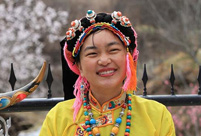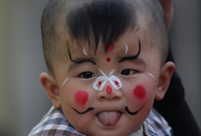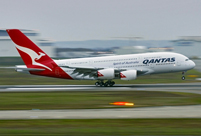Only four Chenghua chicken cups, including the one sold in Hong Kong, are owned privately. Others belong to public museums including the British Museum, the Taipei-based National Palace Museum and the Metropolitan Museum of Art in New York.
Eskenazi described the cup as a unique opportunity that every serious collector, museum or institution wants to own.
"One thing about the Chenghua porcelain is that it is alive. It's like a living piece of porcelain. When you touch it and feel it, the waxiness, softness and thinness are so unique, it is the only porcelain you can identify blind," he says.
The cup had been in the collections of revered collectors such as Leopold Louis-Dreyfus and Sakamoto Goro. It was sold at a record-breaking price of HK$29 million at a Sotheby's auction in Hong Kong in 1999 to the Zuellig family in Switzerland. The chicken cup from Tuesday's auction came from the Zuelligs' Meiyintang Collection.
"Every time a chicken cup appears at auction, it redefines prices in the world of Chinese art. The one sold is one of only three perfect chicken cups ever to come to the market," said Nicolas Chow, international head of Sotheby's Fine Chinese Ceramics and Works of Art.
He said the Chenghua chicken cup is among the most prized items in the history of Chinese art. After the Ming Dynasty, porcelain makers copied the chicken cup as a tribute to the Chenghua period - Qing Dynasty (1644-1911) emperors Kangxi, Yongzheng and Qianlong each commissioned forgeries of the cup. Cups were also reproduced to deceive collectors.
 |  |
 Wonderful moment of China's airborne forces
Wonderful moment of China's airborne forces Bai Baihe shoots for fashion magazine
Bai Baihe shoots for fashion magazine Red terraced fields in Dongchuan of Yunnan
Red terraced fields in Dongchuan of Yunnan Jiaju Tibetan Village
Jiaju Tibetan Village Spring dating
Spring dating Confucius institute at UC Davis
Confucius institute at UC Davis Little painted faces at temple fair
Little painted faces at temple fair Top 10 safest airlines in the world
Top 10 safest airlines in the world Foreign students at China-Myanmar border
Foreign students at China-Myanmar border The backstage of the Fashion Week
The backstage of the Fashion Week College students in Han costumes
College students in Han costumes Postgraduate works as waitress
Postgraduate works as waitress Life in a Lahu village in Yunnan
Life in a Lahu village in Yunnan An orphan’s wedding
An orphan’s wedding Hollywood documentary brings Diaoyu Islands truth to new audience
Hollywood documentary brings Diaoyu Islands truth to new audienceDay|Week|Month